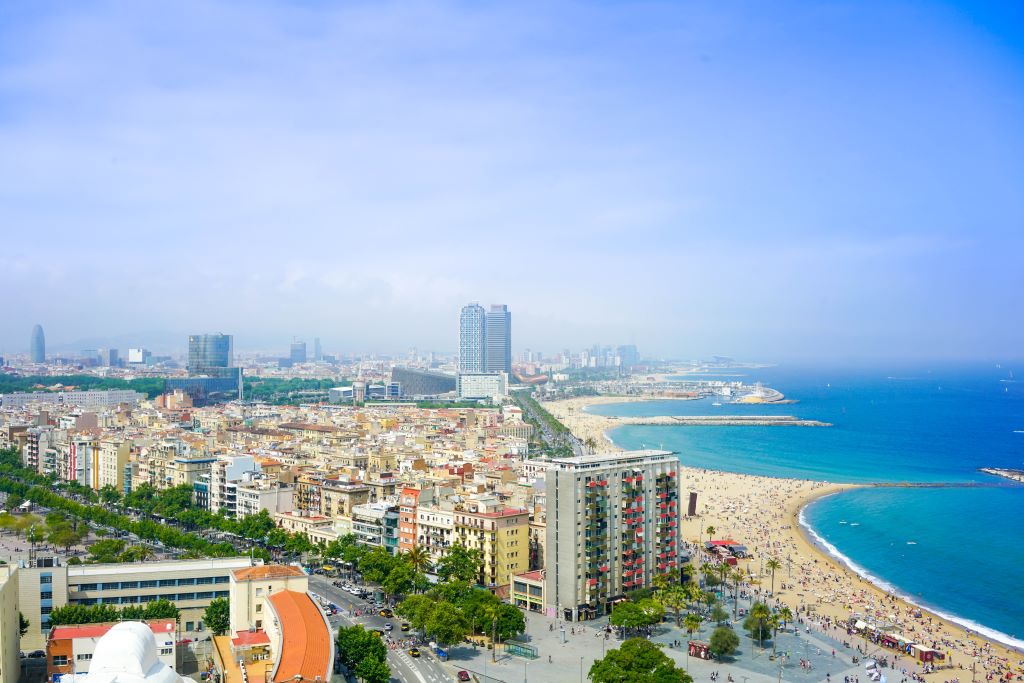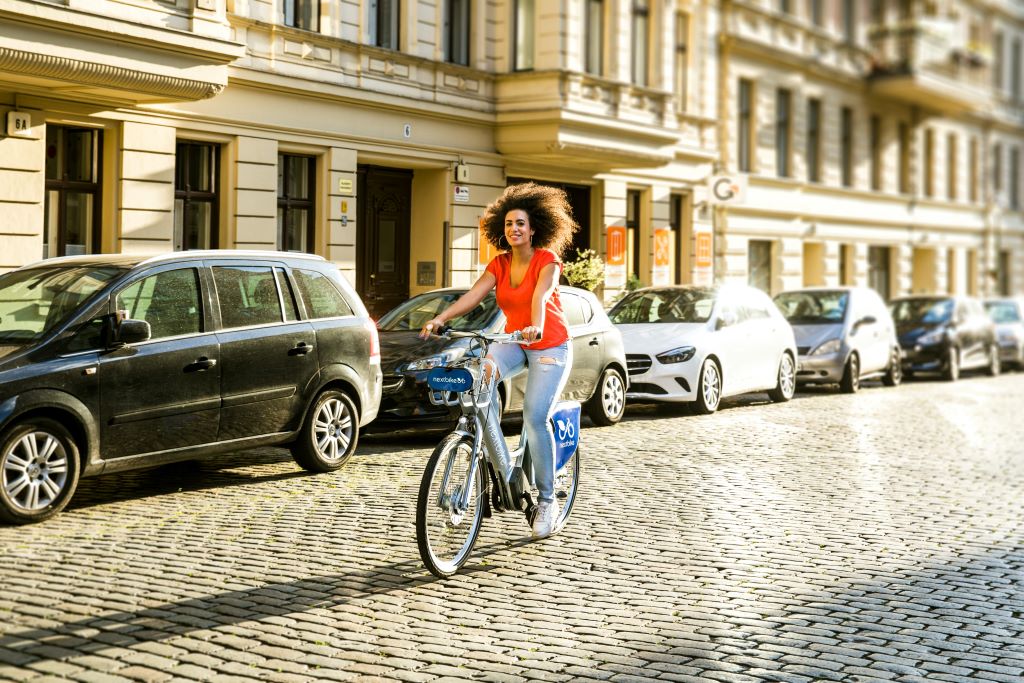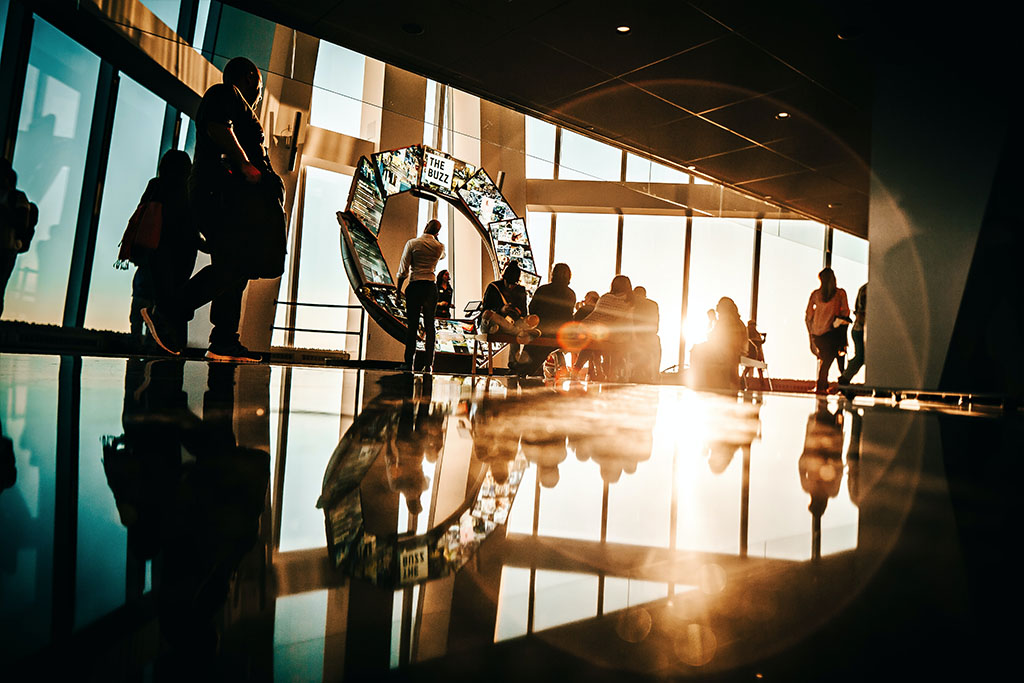COVID-19 disrupted the idea of a “traditional office” work environment. As a semblance of normality starts to return, employers have begun to reconsider the idea of office space. From flexible workplaces to offices with more social spaces, here’s what we can expect for the fluid future of office space.
March 24, 2021
Rows of desks. An open floor plan. Teams sitting together. Before the COVID-19 pandemic, the traditional office space was designed, more than anything, to be functional. Desks and furniture were arranged on the premise that performance and productivity were directly proportional to the time that people spent in the office.
One important metric of success to managers? Time spent in the physical office.
The mass transition to the home office in 2020 turned this type of thinking on its head. At the home office, managers found that productivity and performance didn’t nosedive, and in many cases, actually increased, as employees enjoyed a level of flexibility and work-life balance never previously experienced. Before the pandemic, research has shown, more than half of workers in many EU countries had never worked from home.
As a semblance of normality begins to return, some workers are understandably reluctant to relinquish the greater control they have had over their working lives. Many workers hope to find a 50/50 split between home and office, according to the Adecco Group’s research. However, in reality, preferences are likely to range from the ‘super-teleworker’ who spends just one day in the office to the ‘office aficionado’ who spends five days at the office.
One important metric of success to managers? Time spent in the physical office.
The mass transition to the home office in 2020 turned this type of thinking on its head. At the home office, managers found that productivity and performance didn’t nosedive, and in many cases, actually increased, as employees enjoyed a level of flexibility and work-life balance never previously experienced. Before the pandemic, research has shown, more than half of workers in many EU countries had never worked from home.
As a semblance of normality begins to return, some workers are understandably reluctant to relinquish the greater control they have had over their working lives. Many workers hope to find a 50/50 split between home and office, according to the Adecco Group’s research. However, in reality, preferences are likely to range from the ‘super-teleworker’ who spends just one day in the office to the ‘office aficionado’ who spends five days at the office.
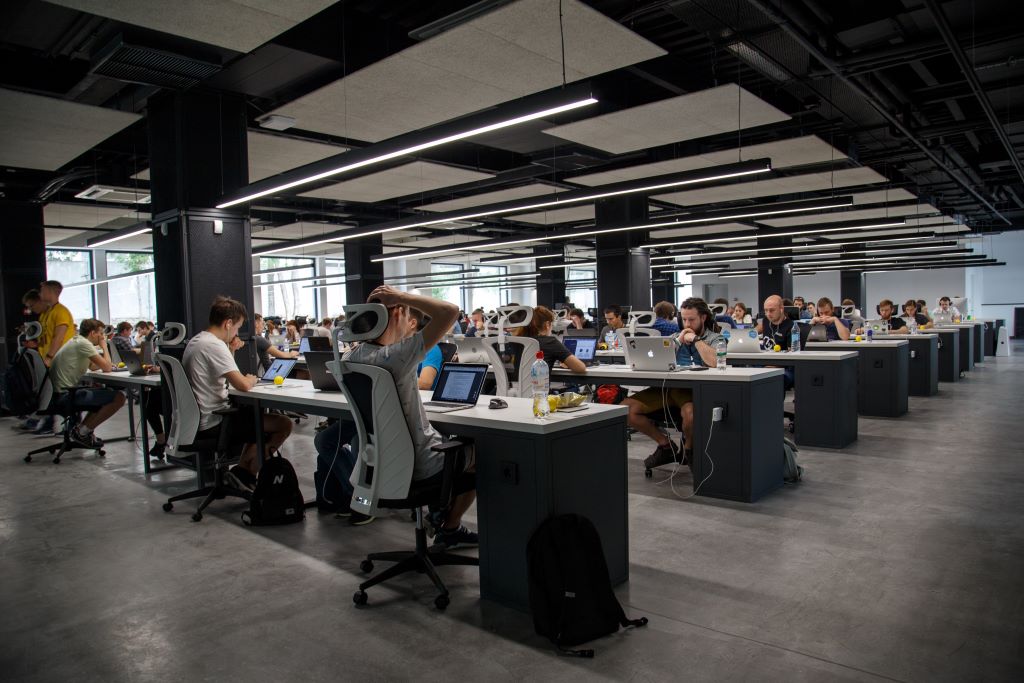
If businesses expect to attract and retain a productive and engaged workforce, they will need to rethink the future of the office to emphasise flexibility. To provide a truly inclusive experience when redesigning office space, the future office will need to cater to all types of workers. The traditional, functional office space will shift to a workspace designed around social interaction, collaboration, and relationship building. A greater emphasis will be placed on technology and spaces that encourage face-to-face interaction as the future of work evolves.
Workers across the world have different expectations in their workplace expectations, according to Adecco Group’s Resetting Normal report. Cultural differences will help dictate how employees help shape the future of their office space.
In Germany, for example, 86% of employees were able to set their own working schedules during the pandemic; half of these workers are expecting to see little to no change in their working situation once the pandemic recovery phase starts. Meanwhile, in the U.S., 85% of workers expect their companies to provide the right equipment for remote working. Three quarters of Italians want to see managers focus on collaboration, problem-solving and adaptability and this will need to be done more and more remotely.
What do workers want from an office space?
Workers across the world have different expectations in their workplace expectations, according to Adecco Group’s Resetting Normal report. Cultural differences will help dictate how employees help shape the future of their office space.
In Germany, for example, 86% of employees were able to set their own working schedules during the pandemic; half of these workers are expecting to see little to no change in their working situation once the pandemic recovery phase starts. Meanwhile, in the U.S., 85% of workers expect their companies to provide the right equipment for remote working. Three quarters of Italians want to see managers focus on collaboration, problem-solving and adaptability and this will need to be done more and more remotely.
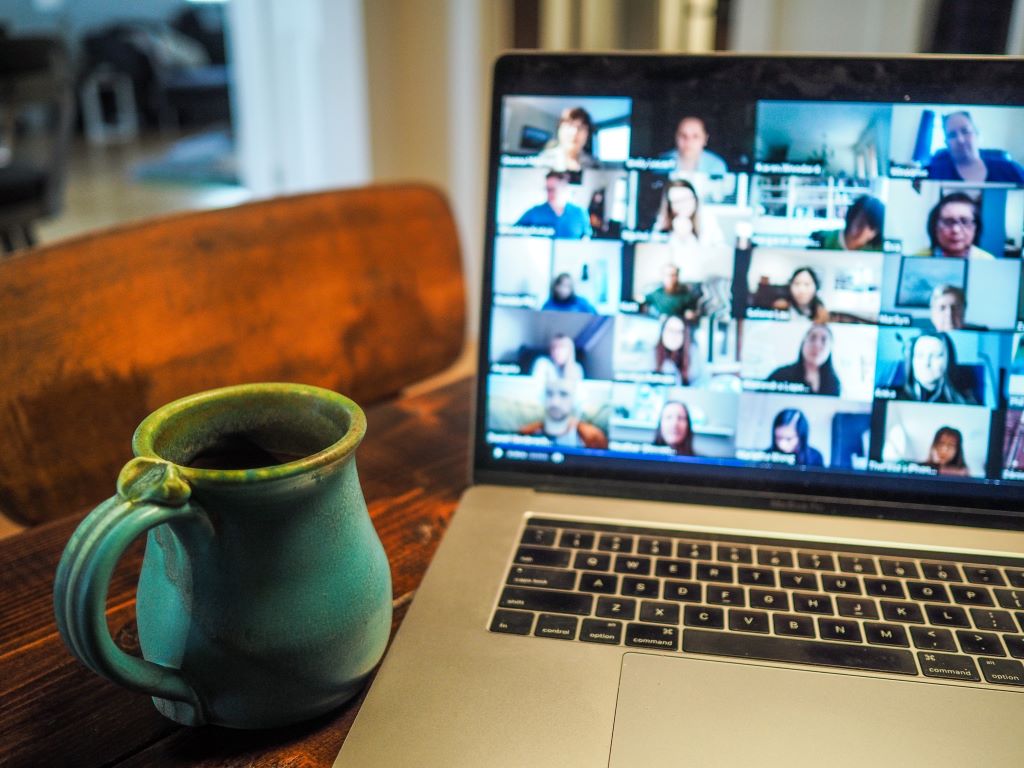
“From our own studies, we can see that previously people spent 70% of their working hours carrying out work processes, and 30% of their time collaborating with colleagues,” The Adecco Group CEO Alain Dehaze said. “Now this will be reversed, with people coming into the office to collaborate, work on projects, creativity, etc, with work processes done in a remote way, eliminating travel time, boosting productivity and enhancing quality of life.”
Changing office use in the future may have financial implications for the employer as well as the employee. Employers may be tempted to offset pandemic-related losses by reducing their fixed costs (like office spaces), especially if employees don’t always come into the office.
However, as the world shifts into a post-pandemic reality, more office space may be required for a similar number of employees to maintain a safe social distance. This distance is not just to reopen safely and maintain social distancing, but to provide the flexibility that the future office will need to offer a fluid and flexible workforce.
As more and more office spaces reopen around the world, the initial focus will be on keeping employees safe and assuaging their fears. In a BBC interview, Albert De Plazaola, global strategy director at design firm Unispace, pointed out that while we have lived with the flu for many years, this is the first time our generation has experienced a pandemic.
“We're now hyperaware of health risks, whether real or imagined, and employers are hypersensitive about the potential for liability if people get sick at work,” De Plazoala said.
All organisations will need to find their own way to build a better, more flexible future of work and future office space for their workers. Digital technology has a crucial role to play in making the environment flexible enough to allow different spaces to be used for different purposes according to people’s needs, whether that involves involve, work, wellbeing, or upskilling.
At the Adecco Group headquarters in Zurich, workers will return to find a vastly different space than the one they left with more social space and more spaces to interact.
Some organisations like Salesforce, Spotify and Twitter have taken flexibility to the extreme by allowing their employees to shift to remote working permanently, from home or from anywhere in the world.
A change in how employees work will also mean a change to Salesforce’s physical office spaces. The company has 19 offices in North America alone, including the recently completed Salesforce Tower in San Francisco, a 1,070-foot-high skyscraper that cost $1.1 billion to build. Going forward, president and chief people office of Salesforce Brent Hyder has said that offices will be redesigned as “community hubs” will collaboration and breakout spaces instead of rows of desks.
Architects across the world are tackling the question of the post-pandemic office space as well. Montalba Architects, for example, envisions a paradigm shift towards a more resilient and flexible office space hub in place of permanent, large open-air office spaces.
Changing office use in the future may have financial implications for the employer as well as the employee. Employers may be tempted to offset pandemic-related losses by reducing their fixed costs (like office spaces), especially if employees don’t always come into the office.
However, as the world shifts into a post-pandemic reality, more office space may be required for a similar number of employees to maintain a safe social distance. This distance is not just to reopen safely and maintain social distancing, but to provide the flexibility that the future office will need to offer a fluid and flexible workforce.
So what will the future office space look like?
As more and more office spaces reopen around the world, the initial focus will be on keeping employees safe and assuaging their fears. In a BBC interview, Albert De Plazaola, global strategy director at design firm Unispace, pointed out that while we have lived with the flu for many years, this is the first time our generation has experienced a pandemic.
“We're now hyperaware of health risks, whether real or imagined, and employers are hypersensitive about the potential for liability if people get sick at work,” De Plazoala said.
All organisations will need to find their own way to build a better, more flexible future of work and future office space for their workers. Digital technology has a crucial role to play in making the environment flexible enough to allow different spaces to be used for different purposes according to people’s needs, whether that involves involve, work, wellbeing, or upskilling.
At the Adecco Group headquarters in Zurich, workers will return to find a vastly different space than the one they left with more social space and more spaces to interact.
Some organisations like Salesforce, Spotify and Twitter have taken flexibility to the extreme by allowing their employees to shift to remote working permanently, from home or from anywhere in the world.
A change in how employees work will also mean a change to Salesforce’s physical office spaces. The company has 19 offices in North America alone, including the recently completed Salesforce Tower in San Francisco, a 1,070-foot-high skyscraper that cost $1.1 billion to build. Going forward, president and chief people office of Salesforce Brent Hyder has said that offices will be redesigned as “community hubs” will collaboration and breakout spaces instead of rows of desks.
Architects across the world are tackling the question of the post-pandemic office space as well. Montalba Architects, for example, envisions a paradigm shift towards a more resilient and flexible office space hub in place of permanent, large open-air office spaces.
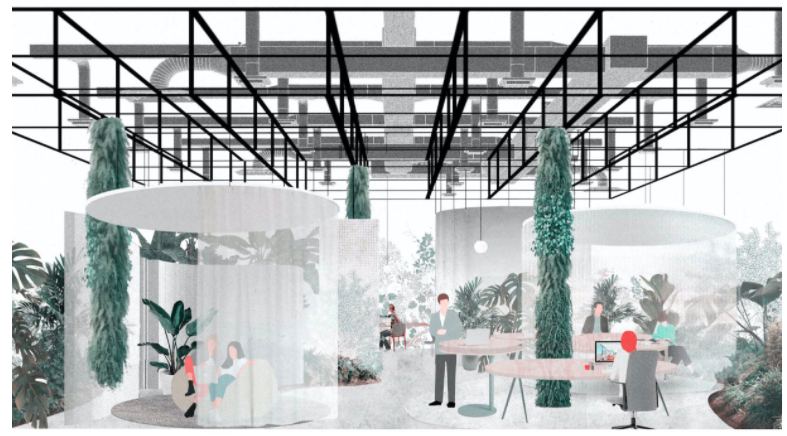
Studio O+A, on the other hand, proposes a new workplace built upon the concept of a web of spaces that combine an open, communal space with more personalized spots that takes into account wellness and social responsibility. The new workspace will recognize our collective responsibility for the common good, the firm told Surface Magazine.
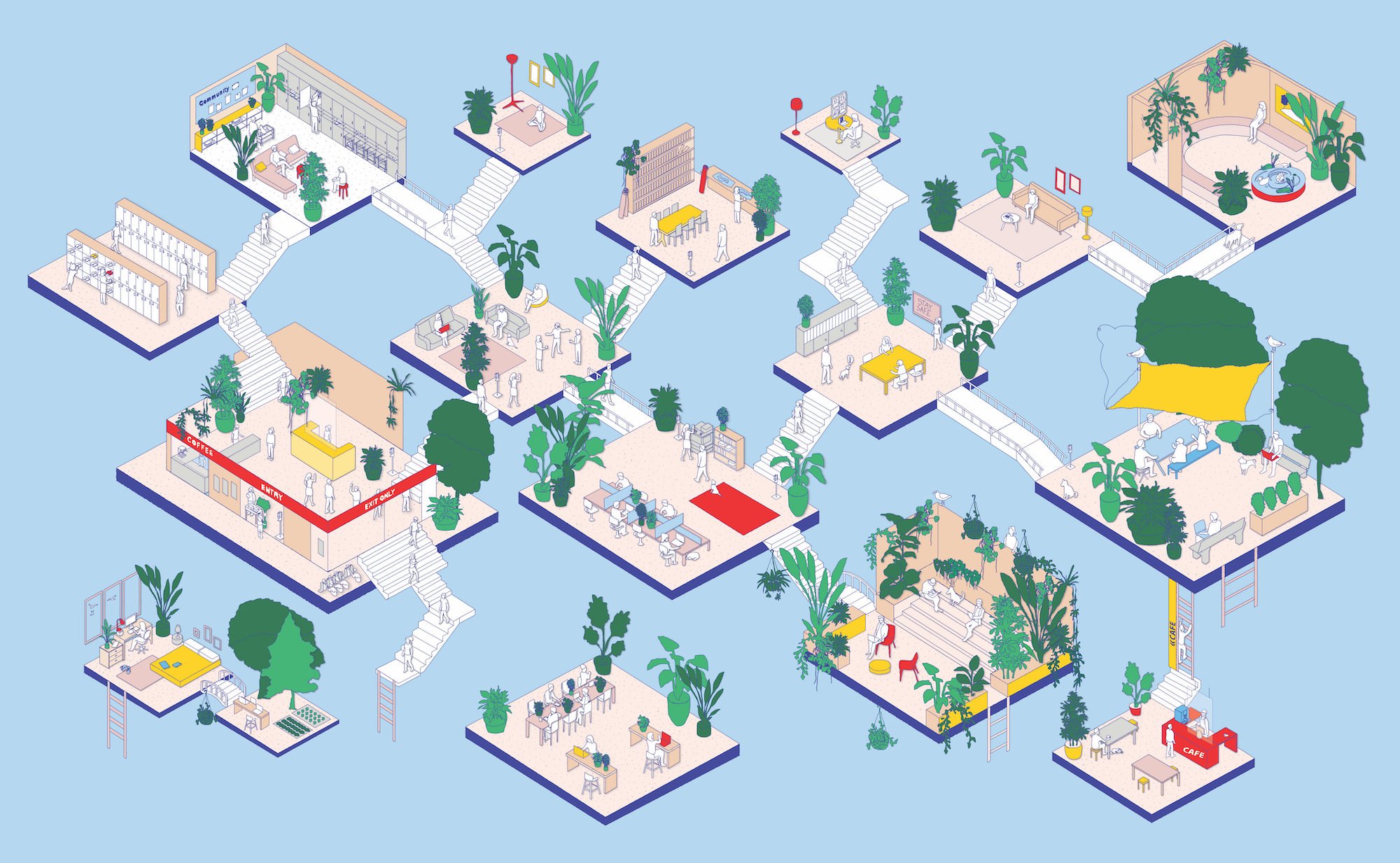
The architects at Wolfgang + Hite see a future office space that takes into account sustainability as a response to climate change. Office spaces in the future will have to better manage rising temperatures while also balancing the workers’ changing demands, the firm told Surface Magazine. In their vision, the company creates an office space with interior acoustic materials to bring rain-captured thermal water mass to reduce energy consumption. The non-hierarchal office plan as pods for workers to use as a focus space or for napping, plus space for meetings and gatherings.
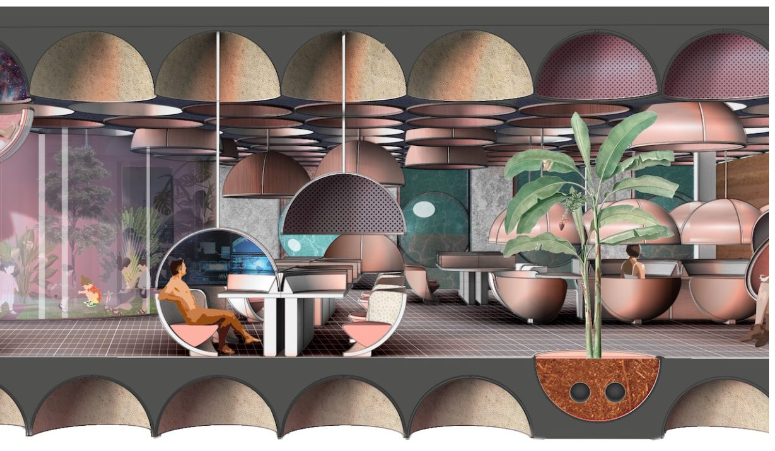
Architect and design director Mattia Gambardella has also revealed a glimpse into a possible post-pandemic office space. The International Youth Cultural Centre in Nanjing, with its soaring 200-metre-high towers, and the transparent, open, and mobile space in the London Bloomberg offices are two examples of how the future of office space might look like.
These, he said, were extreme examples in the world of office design that highlighted how the future workspace is a fluid, liquid concept intended to adapt to the changing nature of working life.
“COVID-19 is adding further impetus to the drive towards a radical rethink of the office environment, which will be increasingly multi-purpose and ‘phy-gital’, an integrated space not only for working, but also for social interaction,” Gambardella said.
These, he said, were extreme examples in the world of office design that highlighted how the future workspace is a fluid, liquid concept intended to adapt to the changing nature of working life.
“COVID-19 is adding further impetus to the drive towards a radical rethink of the office environment, which will be increasingly multi-purpose and ‘phy-gital’, an integrated space not only for working, but also for social interaction,” Gambardella said.

